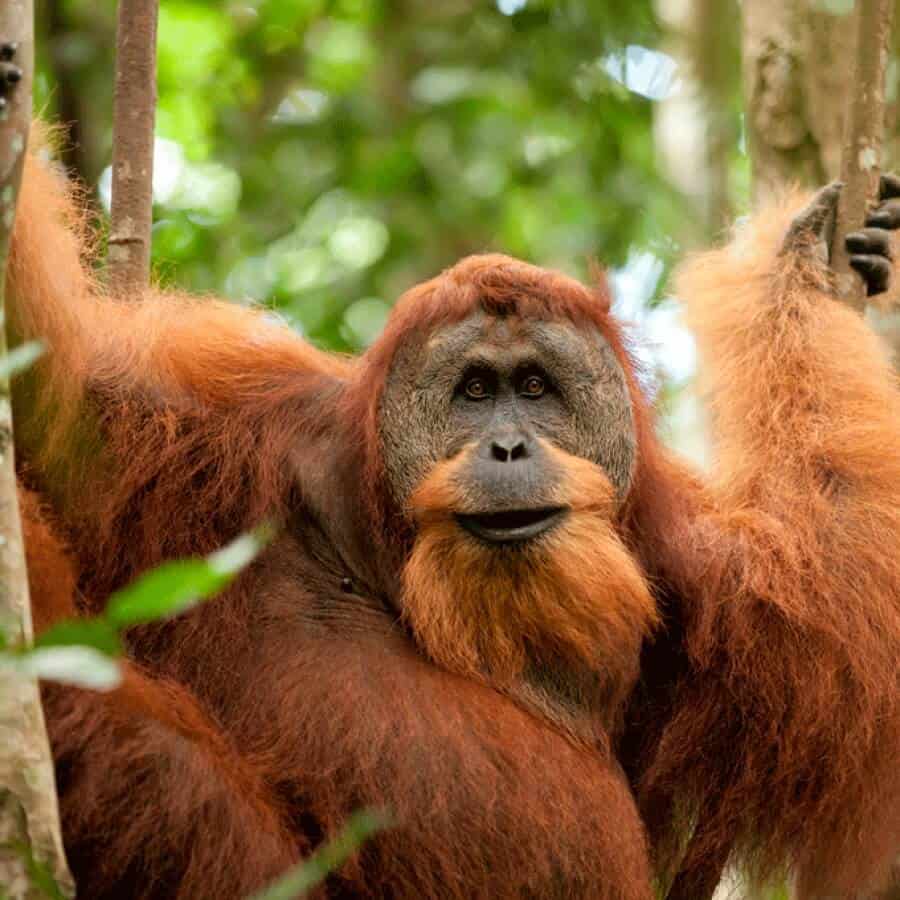Following on from the first two articles of Fantastic Beasts and Where to Find Them where we took a closer look at the bears and big cats of our world, Leigh Woods, Project Manager at Youth Time and wildlife boffin introduces us to our closest living relatives – the great apes!
From the giant Grauer’s Gorilla of the Congo Basin to the recently discovered Tapanuli Orangutan in the tropical rainforests of northern Sumatra, Leigh provides us with some interesting facts about our genetically similar cousins in addition to providing tips on where to best see them in the wild!
Western Gorilla
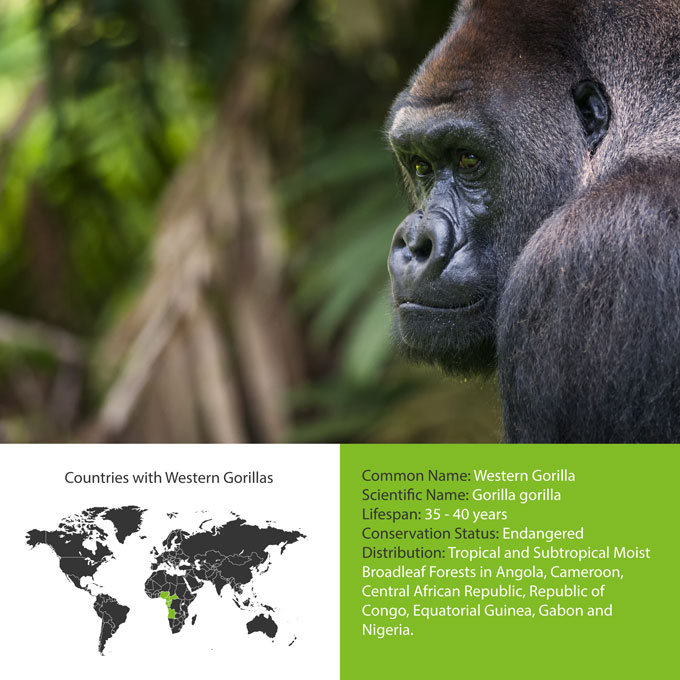
Divided into two sub-species, the Western Lowland Gorilla (Gorilla g. gorilla) and the Cross River Gorilla (Gorilla. G diehli), can be found in the tropical and subtropical broadleaf forests of West Africa. Western Lowland Gorillas are smaller and lighter than all other gorilla subspecies and are also the most widespread. They inhabit Africa’s densest and most remote rainforests, making it hard for scientists to make accurate estimates on their overall population. However it is thought that there are somewhere around 100,000 individuals, making them the most numerous of all the subspecies. The Cross River Gorilla is the world’s rarest great ape and is restricted to a small area of montane rainforest on the border of Cameroon and Nigeria. Their population is estimated at only around 250-300 individuals.
Eastern Gorilla
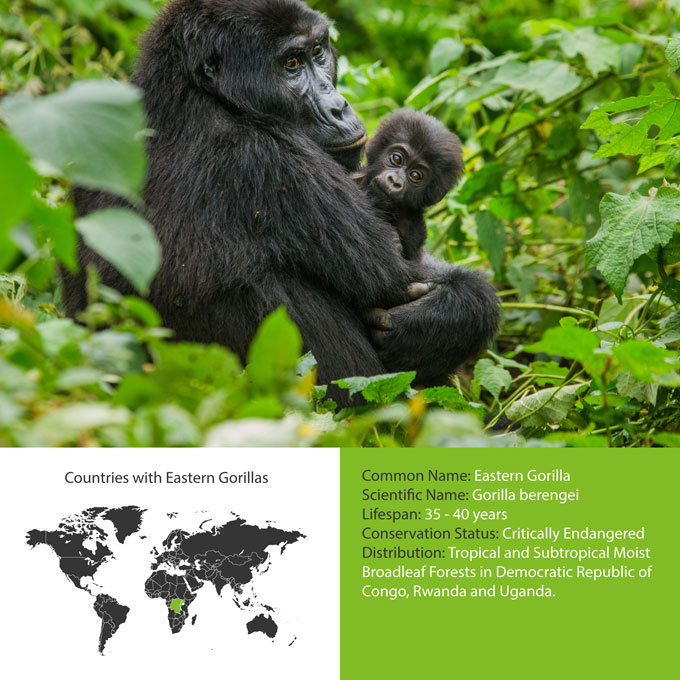
As with the Western Gorilla, the Eastern Gorillas are made up of two subspecies – the Eastern Lowland Gorilla, or, Grauer’s Gorilla (Gorilla. b. graueri) and the Mountain Gorilla (Gorilla. b. beringei). The Grauer’s Gorilla is the largest of all the gorilla subspecies and can be found only in the rainforests of eastern Democratic Republic of the Congo. Research suggests that Eastern Lowland Gorillas occupy only around 13% of their former geographic range and that their population has declined from 17,000 individuals in the 1990s to just 4,000 today. Their closely related cousins, the Mountain Gorilla are slightly smaller and sport longer coats of hair. Made famous by Diane Fossey and the film Gorillas in the Mist, Mountain Gorilla populations have steadily increased in the last few years thanks to dedicated conservation initiatives. Once on the brink of extinction, their numbers are at around 880 individuals today. Only three countries are home to the magnificent Mountain Gorilla, namely Rwanda, Uganda and the Democratic Republic of the Congo.
Chimpanzee
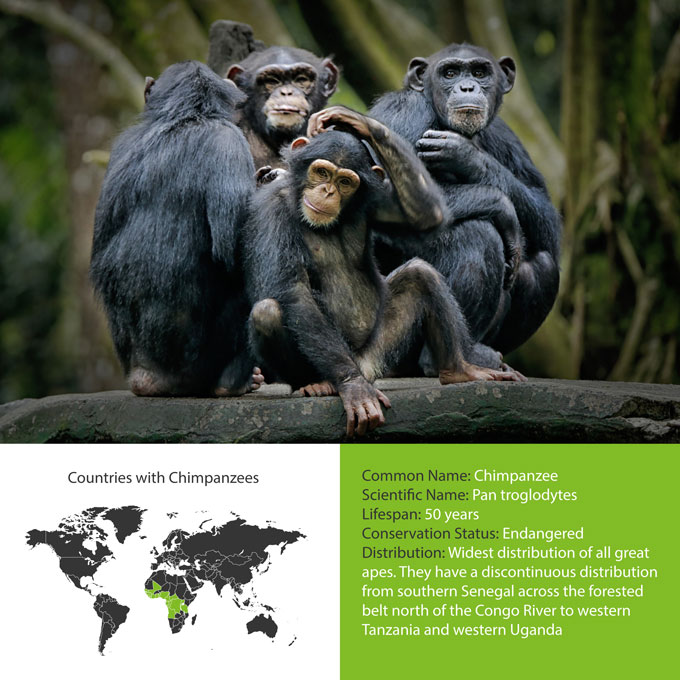
One of our closest living relatives, the Chimpanzee share about 96% of our DNA. Scientists have divided the species into four separate subspecies based on differences in appearance and distribution (Western chimpanzee (Pan. t. verus), Central chimpanzee (Pan. t. troglodytes), Eastern chimpanzee (Pan. t. schweinfurthii), and Nigeria-Cameroon chimpanzee (Pan. t. ellioti)). It is estimated that the wild population of all subspecies together ranges between 150,000 to 250,000 individuals with the Central Chimpanzee being the most numerous and Nigeria-Cameroon Chimpanzee the least. Collectively, they are the most widespread species of all great apes, though their distribution is still considerably smaller and fragmented than it once was. The largest remaining populations occur in central Africa, but the best places to trek chimpanzees are Mahale Mountains National Park in Tanzania, Kibale National Park in Uganda and Nyungwe Forest in Rwanda.
Bonobo
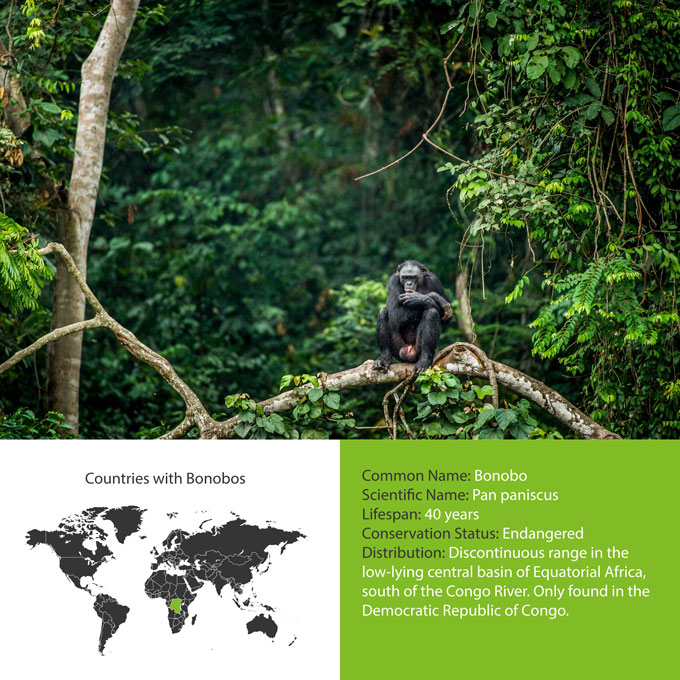
The Bonobo is arguably our closest living relative yet we still know relatively little about them. Very similar in appearance to the chimpanzee, they are also known as pygmy chimpanzees due to the fact they are generally smaller in size. Other distinguishing features include jet black faces with red lips and a prominent tail tuft. Aside from physical characteristics, Bonobos exhibit remarkably different social behavior from chimpanzees. In particular, they are a far more peaceful species than their close cousins who have been known to kill and even eat one another. Restricted to the low-lying basin of Equatorial Africa and found only in the Democratic Republic of the Congo, it is estimated that around 10,000 to 20,000 bonobos are left in the wild. However, data has revealed that their population is fragmented and decreasing. For the best chances of seeing wild Bonobos, head to Salonga National Park.
Sumatran Orangutan
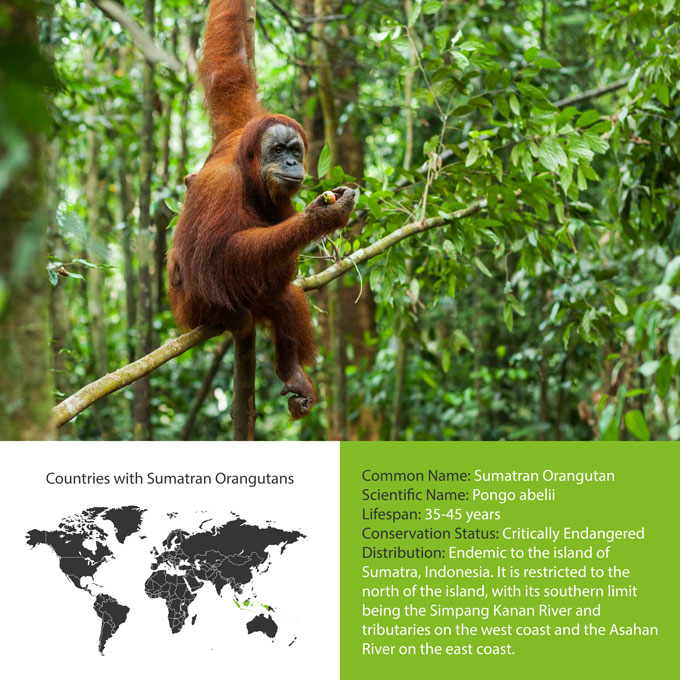
Until very recently, the Sumatran Orangutan was considered the most endangered of two-subspecies with only around 14,600 individuals left in the wild. That was until a new and even more vulnerable to extinction subspecies was discovered on the very same Indonesian island of Sumatra. They are almost exclusively arboreal and can be found living among the trees of tropical rainforests where they feed upon figs and other fruits. Sumatran Orangutans once ranged across the entire island of Sumatra and even further south into Java, however, the nine remaining populations now only inhabit the northerly provinces of North Sumatra and Aceh. For tourists wishing to see the Sumatran Orangutan in the wild, their best bet is to visit Gunung Leuser National Park.
Bornean Orangutan
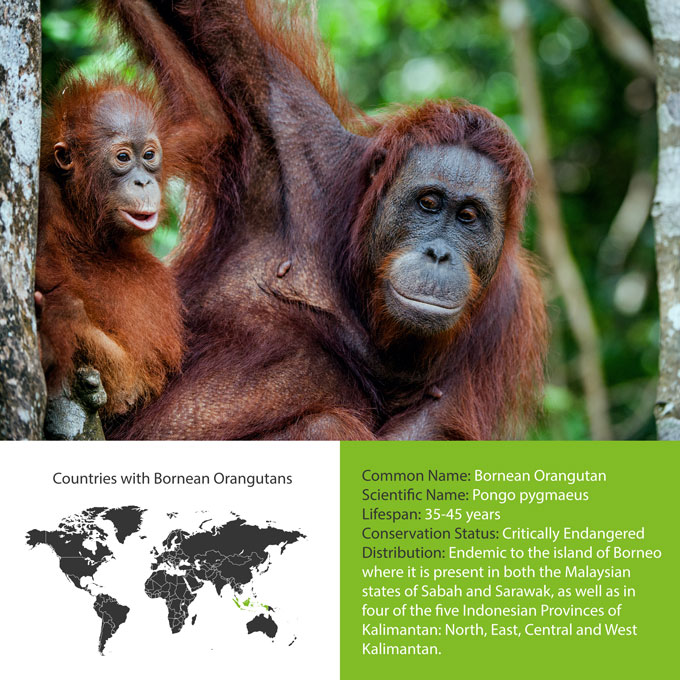
With an estimated 104,700 individuals living in the three countries (Brunei, Indonesia and Malaysia) which make up the island of Borneo, the Bornean Orangutan is easily the most numerous of the three subspecies. Despite their large population, they are still considered as critically endangered on the IUCN red list because of their rapid decline due to habitat loss and illegal poaching. In fact, their populations have declined by more than 50% over the past 60 years owing to the fact that forests and swamps that were once their homes are being torn down to make way for palm oil plantations and logging. Scientists have divided the Bornean Orangutan into three subspecies (Central Bornean Orangutan, Northwest Bornean Orangutan and Northeast Bornean Orangutan) with the former having the largest population. Arguably the best place to spot the “old man of the jungle” in its natural environment is in the Danum Valley.
Tapanuli Orangutan
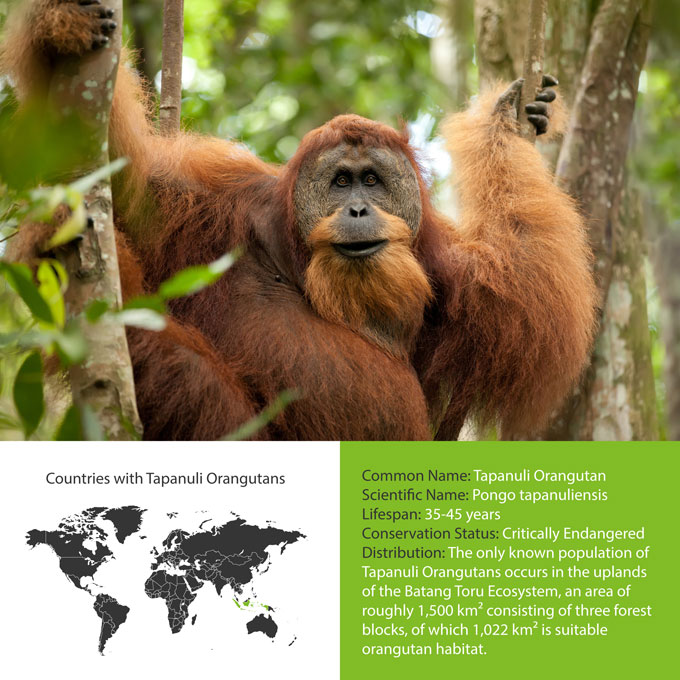
Announced in late 2017 as a new subspecies of orangutan, the Tapanuli Orangutan is now considered to be the rarest of the great apes alongside the cross river gorilla with an estimated 800 or fewer individuals. They were discovered first in 1997, but following extensive research were determined as a new third species based on morphological and genomic evidence. The Tapanuli Orangutan is believed to have been isolated from its close relatives around 10,000 to 20,000 years ago. They occupy and are endemic to an area of 475 square mile upland forest in the Batang Toru Ecosystem situated in northern Sumatra.
Photos: Shutterstock / Graphic Design: Leigh Woods
Support us!
All your donations will be used to pay the magazine’s journalists and to support the ongoing costs of maintaining the site.
Share this post
Interested in co-operating with us?
We are open to co-operation from writers and businesses alike. You can reach us on our email at [email protected]/[email protected] and we will get back to you as quick as we can.
